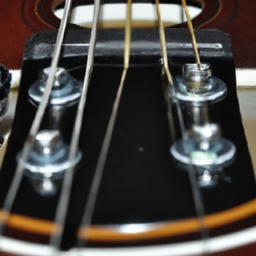Are you a left-handed individual who wants to learn how to play the guitar? Look no further! This article is here to guide you through the process of playing the guitar left-handed. Whether you’re a beginner or have some experience, we will explore the essential steps and techniques that will help you become a skilled left-handed guitarist. So grab your guitar and let’s get started!
Choosing the Right Guitar
When it comes to playing guitar left-handed, the first step is to choose the right instrument. While most guitars are designed for right-handed players, there are left-handed options available. It’s important to consider the type of guitar that suits your musical preferences and genre. Whether you prefer an acoustic, electric, or classical guitar, there are left-handed options in each category.
Understanding String Configuration
Once you have chosen a left-handed guitar, it’s crucial to understand the string configuration. In the standard string arrangement, the thickest string, also known as the low E string, is placed at the top, while the thinnest string, the high E string, is at the bottom. However, for a left-handed guitarist, it is necessary to reverse the string order to match the mirrored orientation.
Adjusting the Guitar Setup
To optimize your left-handed guitar playing experience, it may be necessary to make some adjustments to the setup. Firstly, flipping the guitar strings is essential, ensuring that the low E string is on top and the high E string is at the bottom. Additionally, re-positioning the nut may be necessary to ensure that the strings align properly with the fretboard. Lastly, adjusting the bridge and saddle helps to achieve optimal intonation and string height.
Developing Left-Handed Technique
As a left-handed guitarist, you will need to develop a specific technique to accommodate your dominant hand. One way to do this is by mirroring chord fingerings. For example, a right-handed guitarist might use their index finger to play the chords, while a left-handed guitarist can use their index finger instead. Adapting strumming and picking techniques is another important aspect of developing left-handed technique. Experiment with different hand positions and angles to find what feels most comfortable for you.
Learning Left-Handed Chords
In order to play songs and create music, it’s essential to familiarize yourself with left-handed chords. Understanding chord shapes is important, as they form the basis for many songs. By practicing common left-handed chords, such as A, C, D, E, G, and F, you will gradually build up your chord vocabulary and become more proficient in playing a wide range of songs.
Mastering Left-Handed Scales
Scales play a vital role in guitar playing, as they enable you to create melodies, improvise, and add embellishments to your playing. To master left-handed scales, it’s important to get familiar with scale patterns and their fingerings. Many scales can be played with the same patterns, regardless of whether you are right-handed or left-handed. Simply apply the left-handed fingerings to the scale patterns and practice them regularly to build up speed and accuracy.
Using Left-Handed Tabs and Notation
When reading music or tabs, it is crucial to find left-handed resources that help you understand the fingerings and positioning correctly. While most guitar tabs and notation are written for right-handed players, there are sources available specifically tailored for left-handed guitarists. By using left-handed tabs and notation, you can easily understand the finger placements and improve your overall playing ability.
Seeking Left-Handed Guitar Resources
It can be challenging to find appropriate resources and information specifically designed for left-handed guitarists. However, there are dedicated left-handed guitar websites that offer a wealth of information, including tips, techniques, and even product recommendations. Additionally, joining left-handed guitar communities, such as forums or social media groups, can provide valuable support and advice from fellow left-handed guitarists.
Getting Left-Handed Lessons
Taking lessons from a left-handed guitarist can greatly enhance your learning experience. A left-handed instructor will understand the challenges and nuances that come with playing guitar left-handed and can tailor their teaching methods accordingly. If you are unable to find a left-handed guitar teacher in your area, don’t worry! It is still possible to adjust right-handed guitar lessons to suit your needs. Communicate your preferences and challenges to your instructor, and they will be able to guide you accordingly.
Overcoming Challenges
Playing guitar left-handed may present some unique challenges, but with dedication and consistent practice, these can be overcome. One common challenge is building finger strength and dexterity in your fretting hand. Practice exercises, such as finger stretches and playing scales, can help build strength and flexibility over time. Another challenge is developing muscle memory for left-handed techniques. Consistent practicing and repetition of left-handed chord progressions and scales will gradually train your muscles to become familiar with the patterns and movements.
Remember, playing guitar left-handed is a personal choice that allows you to express your musicality in a way that feels comfortable and natural to you. Embrace the journey, enjoy the process, and don’t be afraid to experiment and explore your own unique style. With perseverance and a positive attitude, you can become a skilled left-handed guitarist and create beautiful music for yourself and others to enjoy.

